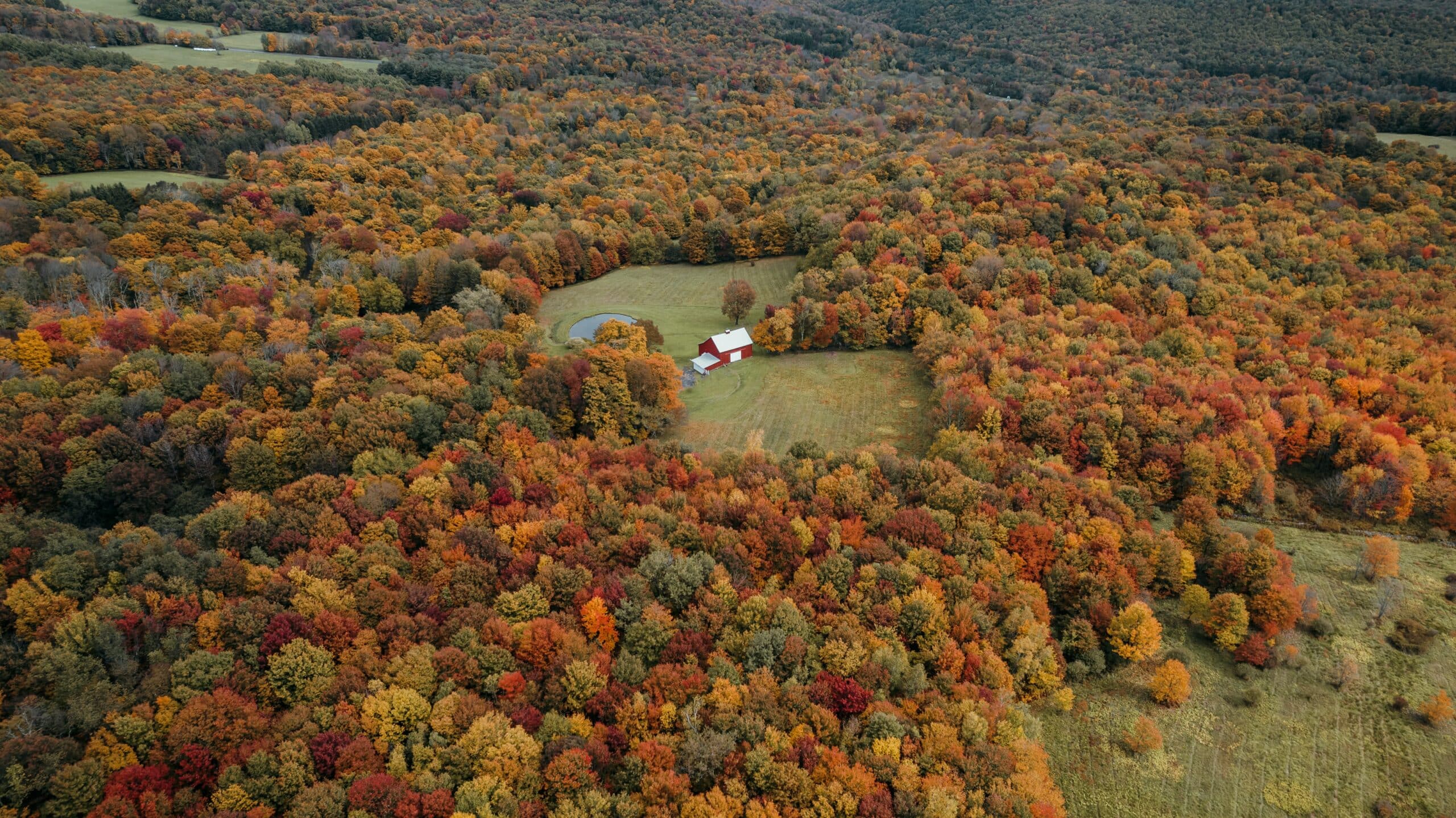Do you want to learn how to plant and grow a pistachio tree? This amazing tree can provide an abundance of delicious, nutritious nuts while also adding beauty and shade to your garden. With the right knowledge and commitment, anyone can learn to successfully grow these remarkable trees.
In this article, you will learn about the different varieties of pistachio trees, their ideal growing conditions, and what steps are necessary for planting a healthy tree. You will also find out how to care for your new tree in order to ensure that it grows strong and produces an abundant crop of delicious nuts. Finally, we will discuss some common pests and diseases that could potentially affect your pistachio tree.
By following the tips outlined in this article, you can have a beautiful and productive pistachio tree in no time! So let’s get started on our journey towards growing a successful pistachio tree!
Selecting And Buying Pistachio Tree Varieties
When it comes to planting and growing pistachio trees, selecting the right variety is key. You’ll want to look for a tree that is suitable for your climate, as well as one with a high yield of nuts. Depending on where you live, certain varieties may be better suited than others. For example, if you live in an area with hot summers and cold winters, you should look for varieties such as ‘Kerman’ or ‘Peters’. On the other hand, if you live in an area with milder climates, then ‘Schinias’, ‘Ahmad-Aghaee’ or ‘Tetrazzini’ may be better options.
Once you’ve decided on a variety, you’ll need to find a reputable nursery from which to purchase your tree. It’s important to buy from a trusted supplier so that you can be sure that the tree is healthy and disease-free. When ordering online, make sure to read reviews from previous customers before making your purchase.
If you are able to buy locally, inspect the tree before buying it. The roots should be firmly bound together in a ball of soil and there should be no signs of damage or disease on the leaves or bark. Once you have purchased your tree, keep it well watered until it has become established in its new home.
Understanding the climate requirements of pistachio trees is essential before deciding whether they are right for your garden or not. Make sure to check what temperature range they require and how much water they will need during their growing season so that they are able to thrive in their new environment.
Understanding Pistachio Tree Climate Requirements
When it comes to growing pistachio trees, understanding climate requirements is a critical step. These trees are hardy and can survive in USDA zones 6 through 9. Pistachios need full sun exposure, with temperatures ranging from 25 to 115 degrees Fahrenheit. Here’s a 4-item list of what these trees need:
- Hot summers and mild winters
- Full sun exposure
- Low humidity levels
- Well-drained soil
Providing the right environment for gardeners’ pistachio trees will ensure healthy growth and production of tasty nuts, satisfying both the homeowner’s own cravings for pistachios as well as those of their friends and family members!
Keep in mind that deep watering once or twice a week is important for optimal growth. When watered deeply, the root system can more easily access nutrients from the soil, resulting in better overall health of the tree and its production of nuts.
To get your pistachio tree off to a good start, preparing the planting site appropriately is key — making sure there’s enough space for complete air circulation around the tree will help ensure it has plenty of room to grow and flourish!
Preparing The Planting Site
Like a skilled gardener, planting and growing a pistachio tree requires thoughtful preparation and care. Prepping the site is essential for success – it’s the foundation to a healthy tree and abundant yields. Here are four things to keep in mind:
- Choose a sunny spot that gets at least 8 hours of direct sunlight each day.
- Test the soil drainage using the saucer method – if water pools in the saucer after 15 minutes, you may need to improve drainage by adding organic matter or planting in raised beds.
- Dig a hole twice as wide as the root ball of your tree and about 1 foot deep.
- Amend your soil with compost or other organic matter if needed, such as for sandy soils.
Creating an ideal environment for your pistachio tree means providing access to plenty of sunshine, adequate drainage, and nutrient-rich soil. It’s important to take into account local climatic conditions when selecting what variety of tree to plant. Soil testing can provide insights into exactly what type of amendments are necessary before planting so you can give your pistachio tree optimal growing conditions from its earliest days in the ground. With this knowledge and careful preparation, your efforts will be rewarded with a healthy and productive pistachio tree in no time!
Planting A Pistachio Tree
Planting a pistachio tree is like planting a seed for the future – it requires patience, effort and dedication to ensure it grows and flourishes. Just like any other tree, pistachio trees need to be planted correctly in order for them to thrive. Here’s how you can do that:
First, make sure you have the correct soil type. Pistachio trees need well-drained soil that is rich in organic matter. An ideal soil should also have a pH level of 6.0 or higher. Additionally, pistachio trees require full sun exposure so make sure your chosen spot gets plenty of sunlight.
Next, dig a hole that’s twice as wide as the tree’s root ball but no deeper than its current depth. When you place the tree into the hole, fill in the sides with soil and then lightly tamp it down with your hands or feet. Make sure to keep the trunk straight while doing this so that it’s not crooked when planted.
Finally, water your tree right away so the root ball will settle nicely into its new environment. Afterward, using mulch around your newly-planted tree can help retain moisture and prevent weeds from growing near its roots. It will also provide additional nutrients for your pistachio tree over time as it decomposes naturally into the soil.
Watering And Fertilizing Pistachio Trees
Watering and fertilizing a pistachio tree is like giving it a hug and a kiss – it provides the tree with the sustenance to help it thrive. Without proper hydration and nourishment, these trees won’t be able to reach their full potential. By understanding how to properly water and fertilize your pistachio tree, you can ensure that it grows healthy and strong.
When it comes to watering, pistachio trees need at least 1-2 inches of water per week during the growing season. When temperatures are warmer, increase the amount of water provided to keep the soil moist but not soggy. For young trees, you may need to water more frequently until they become established. During periods of drought or lower rainfall amounts, extra water will be necessary.
Fertilizer should also be applied twice per year (once in spring before new growth begins and once in mid-summer). Use a balanced fertilizer with an N-P-K ratio of 10-10-10 for young trees and 8-8-8 for mature trees. Apply fertilizer around the drip line of the tree (in a circle from the trunk outwards). Remember to follow instructions on product labels for application rates, timing, and mixing instructions as this will vary by product type.
With proper hydration and nutrition, your pistachio tree can stay healthy well into old age! With thoughtful care and attention now, you can set your tree up for success in its future years.
Pruning Young Pistachio Trees
Like a tree, a pistachio tree needs to be pruned in order to grow and reach its full potential. Pruning young pistachio trees is an important step in helping them become healthy, productive plants. Here are three steps to take when pruning young pistachio trees:
Begin pruning when the tree is 3-5 years old. It’s best to wait until the tree has grown enough branches to ensure that it will have plenty of foliage which will help protect it from damage due to sun or wind exposure.
Remove any dead or diseased branches as soon as you notice them. This helps keep the tree healthy and encourages new growth.
Prune off any branches that are growing at an angle or towards the ground, as these can lead to weak or uneven growth. Make sure to leave enough leaves on each branch so that it will still be able to photosynthesize properly.
Pruning your young pistachio trees is essential for their health and productivity – but it’s important not to overdo it! Too much pruning can weaken the tree, so make sure you are only removing what is necessary and leaving enough foliage behind for photosynthesis. With careful pruning and good care, your pistachio trees should thrive and provide you with delicious nuts for years to come! Next up: controlling pests and diseases in your pistachio crop – a must for keeping your trees healthy!
Controlling Pests And Diseases
It’s a gardener’s worst nightmare: the sight of pests and diseases ravaging their beloved pistachio trees! With so much at stake, knowing how to control these potentially devastating conditions is essential. Controlling pests and diseases in pistachio trees is an absolute must if you want to have any hope of harvesting nuts.
Fortunately, there are a few key steps you can take to protect your precious pistachio tree crop. Pruning young trees to open up the canopy and reduce humidity is one way to reduce fungal disease problems. Additionally, regular fertilization and irrigation can help strengthen the tree, making it more resistant to both insects and diseases.
Finally, keeping an eye out for signs of infestation or infection is also important for protecting your tree against pests and diseases. Early detection can help you address the problem quickly before it has a chance to spread. By taking these simple steps, you can ensure that your pistachio trees remain healthy and productive for many years to come – now it’s time to start harvesting those nuts!
Harvesting Pistachio Nuts
Harvesting pistachio nuts is an exciting and rewarding process for any gardener. With the right care, your trees will produce delicious and nutritious nuts for years to come. Here we’ll discuss how to harvest your pistachio nuts safely and effectively:
• Monitor the color of the husks – When the husks turn from green to light brown, it’s time to harvest! • Shake the tree gently – After you’ve identified that it’s time to harvest, shake the tree gently so that the nuts fall onto a tarp or container below. • Collect fallen pistachios quickly – Make sure you collect them quickly after they’ve fallen or else risk them getting eaten by critters. • Separate unripe nuts out – Ripe pistachios will have an easily opened husk, while unripe ones won’t fully open. Separate out these unripe nuts from your collection and let them ripen indoors. • Store harvested pistachios properly – Put your harvested pistachios in a sealed container with air holes and store in a cool dark place until ready to eat or process.
Harvesting your own pistachio nuts is both enjoyable and rewarding. Not only do you get to enjoy their freshness but also their nutritional benefits as well! And once you’ve got those trees producing plenty of nuts, it’s time to move on to storing and processing them for maximum freshness and flavor.
Storing And Processing Pistachio Nuts
Storing and processing pistachio nuts is the last step in harvesting them. The key to preserving their freshness is to remove them from the husks as soon as possible and then store them properly. Here are three tips that will help you enjoy your pistachio nuts for months to come:
First, store the shelled pistachios in an airtight container in a cool, dry place. This will help prevent spoilage and keep the nuts crisp. Second, if you want to freeze them, put them in a plastic bag and seal it tightly before placing it in the freezer. Finally, if you’d like to make your own pistachio butter or paste at home, grind up shelled nuts using a food processor or blender until they reach your desired consistency.
With these simple tips, you can make sure that your homegrown pistachios stay fresh and flavorful for months after harvest! Now that you’ve learned how to store and process your pistachio nuts properly, let’s look at some common problems with growing pistachio trees.
Common Problems With Pistachio Trees
It may be true that growing pistachio trees is not as difficult as it seems, but common problems can still arise. While there are many potential issues, some of the most common include disease and pest infestations. It’s important to be aware of these potential pitfalls and take steps to protect your trees so they can flourish.
Disease is a major concern for anyone growing pistachio trees. Fungal diseases such as scab and leaf spot can quickly spread among the trees, weakening them and making them prone to other issues. Regular preventive treatments such as pruning and fungicide applications are essential to keep these diseases at bay. Additionally, insect infestations can also cause significant damage to the leaves and branches of your pistachio tree. Regularly applying insecticides can help reduce the risk of insect damage.
Finally, drought stress is another issue that should be monitored when growing pistachio trees in dry climates. During periods of prolonged drought, your trees may require additional water or supplemental irrigation in order to survive and thrive. Keeping an eye on the soil moisture level will help ensure that your plants get enough water during extended dry spells. Taking care of these common problems with pistachio trees will give you a greater chance of success in growing a healthy tree.
By being proactive about disease prevention, pest control, and proper irrigation, you’ll be able to maximize your chances for success when it comes to pollination considerations for pistachio trees.
Pollination Considerations For Pistachio Trees
When considering pistachio trees, it’s important to look at the pollination process. Pollination plays an integral role in producing a successful crop of nuts. It’s especially essential for commercial growers who rely on their yield as a source of income. So, what are the pollination considerations for pistachio trees?
The first consideration is that pistachio trees are self-pollinating, meaning that pollen from one tree can fertilize itself. However, cross-pollinating between different varieties helps to produce larger yields and higher-qualitynuts, so if you’re growing multiple types of pistachio trees, it’s beneficial to plant them close together. You should also consider the timing of when you plant your trees – for most varieties in the United States, mid-February is ideal for planting and harvesting.
Another factor to consider is honeybees – they are essential for successful pollination of pistachio trees. If there aren’t enough bees present or if they don’t have access to your crop, then it’s likely that you won’t have any yields come harvest time. To help ensure success with pollination, make sure to attract honeybees by growing flowers near your pistachio trees or providing hives nearby.
With these details in mind, you can be more confident when planting and growing your own pistachio trees. Next up? We’ll take a look at some common cultivars of pistachio trees and how they differ from each other…
Common Pistachio Tree Cultivars
A pistachio tree’s beauty is only matched by its diversity. With so many different cultivars to choose from, the possibilities are endless. Whether you’re looking for a large shade tree, a small ornamental, or a variety that produces edible nuts, there’s sure to be a cultivar of pistachio tree to suit your needs.
The first thing to consider when selecting a pistachio tree is what size and shape you want it to be. Popular varieties such as ‘Kerman’ and ‘Sioux’ can grow up to 25 feet tall with an upright pyramidal shape, while more compact varieties like ‘Peters’ and ‘Shahani’ stay much smaller at around 10 feet tall.
Once you’ve chosen the size of your pistachio tree, you’ll need to consider the flavor of the nuts it produces. Some popular varieties include ‘Kerman’, which has sweet and buttery-flavored nuts; ‘Sioux’, which boasts crunchy nuts with a hint of bitterness; and ‘Peters’, which has mild-tasting nuts with a subtle sweetness.
TIP: If you’re looking for an easy-to-grow tree that produces tasty nuts in abundance, try planting a ‘Kerman. This variety is known for its hardiness and plentiful nut production!
Pistachio Tree Nutrition And Soil Requirements
Just like a human, pistachio trees need nutrition to thrive. They need the perfect mix of soil and sunlight to grow tall and strong — symbols of renewal and hope. Careful attention to their needs is essential for successful harvest of this delicious nut.
Nutrients are important for healthy growth, and the right soil is key. Pistachios prefer loamy soils with adequate drainage. The soil should also have a neutral pH level between 6.5-7.5, as well as nitrogen, phosphorus, potassium, calcium, magnesium, zinc and other micronutrients. To ensure that your tree gets the nutrients it needs, use a slow-release fertilizer when planting or supplementing existing soil with organic compost or manure every year or two.
With the right combination of nutrients in place, your pistachio tree will be ready to reach its full potential. It’s time to protect it from frost damage so that you can enjoy a bounty of tasty nuts in years to come!
Protecting Pistachio Trees From Frost
When growing pistachio trees, protective measures from frost are essential. Frost can have a devastating effect on the health and productivity of your tree, so understanding how to protect it is key. But what does this involve?
Achieving success in protecting pistachio trees from frost requires an understanding of the conditions that contribute to frost damage. This includes temperature, humidity and wind speed. In addition, certain cultural practices can mitigate the risk of frost damage occurring, such as pruning and mulching. Taking these steps will ensure your pistachio tree is safe from frost.
Knowing which products to use for protection is also important – such as antifreeze sprays, blankets and other materials that act as insulation against cold weather conditions. Implementing these products in combination with the right cultural practices will significantly reduce the risk of frost damage to your pistachio tree. With this knowledge in hand, you’ll be ready to move on to learning about popular pistachio tree uses….
Popular Pistachio Tree Uses
From savory dishes to sweet desserts, pistachio trees have a wide range of uses that make them incredibly popular. Juxtaposed against the hard work of planting and growing the trees, these uses make it all worthwhile! With their unique blend of flavor and texture, pistachio tree products are sure to tantalize taste buds around the world.
The first use is as an ingredient in savory dishes. Pistachio nuts can be used as snacks or added to salads and other dishes for a burst of flavor. The greenish-brown color also makes them a great addition to dishes for visual appeal. Additionally, pistachio nut butter has become increasingly popular in recent years due to its delicious taste and versatility.
The second use is as an ingredient in desserts. Pistachios add crunchy texture and nutty sweetness to cakes, ice cream, cookies, and more. They’re also often used as a topping for sundaes or shakes for an extra layer of flavor. Finally, pistachio syrup is becoming increasingly popular as a topping for pancakes or waffles since it adds just the right amount of sweetness without being cloying.
Pistachio trees may take some time and effort to grow but they are definitely worth it because of their many uses! Whether you’re cooking up savory dishes or creating sweet treats, these trees will provide you with plenty of delicious flavors and textures that are sure to please everyone’s palate.
Frequently Asked Questions
How Much Space Does A Pistachio Tree Need?
If you’re thinking of planting pistachio trees, an important factor to consider is how much space these trees will need. Pistachio trees are generally considered to be a medium-sized tree, growing anywhere from twenty to thirty feet tall and wide. This means that when determining the space needed for one or more pistachio trees, you should plan for a minimum of about fifteen to twenty feet in between each tree.
When planting several pistachio trees together, make sure that your spacing will allow them room to grow without competing with each other for resources. To get maximum yield from your harvest, it’s important that the trees have enough space and sunlight so they can thrive and reach their full potential. It’s also important to note that while they can tolerate partial shade, full sun exposure is best for the healthiest growth.
In addition to adequate spacing and sunshine, it’s essential that you provide your pistachio trees with proper soil conditions and water drainage. The soil needs to be well-draining and should have a pH level of 6.0 – 8.0 for optimal growth. Also, regular irrigation during dry spells is critical since inadequate moisture levels can result in poor yields or even lead to tree death in extreme cases. By following these guidelines, you’ll ensure that your pistachio tree has all the necessary ingredients for success!
How Long Does It Take For A Pistachio Tree To Produce Nuts?
If you’re looking to grow pistachio trees in your backyard, one of the questions you may have is how long it takes for them to produce nuts. The answer is that it depends on the variety and the climate. Generally, it will take between three and four years for a pistachio tree to start producing nuts.
In order to ensure that your pistachio tree thrives, it’s important that you choose an appropriate variety for your particular climate. If the weather conditions are not ideal, then the tree may take longer than usual to bear fruit. Additionally, if the soil or environment is not suitable for growing pistachios, then the chances of success are greatly reduced. So make sure you do your research before planting!
Once planted and properly cared for, however, your pistachio tree should eventually start producing nuts. With regular pruning and fertilization over its first few years of growth, your tree should be well-prepared to bear its first harvest after around three to four years. Enjoy the fruits of your labor!
What Are The Differences Between Male And Female Pistachio Trees?
Planting pistachio trees can be a rewarding and productive experience, but it’s important to understand the differences between male and female plants before you get started. Alliteration alert! To properly plant and grow pistachio trees, knowing the key distinctions between male and female plants is paramount.
Male pistachio trees produce pollen while female pistachio trees produce flowers. Male plants must be planted within 150 feet of a female plant in order for pollination to occur, which is essential for producing nuts. Female plants need well-draining soil in order to thrive; proper irrigation is also necessary for their health.
In contrast, male pistachio trees require less water than females because they don’t produce fruit. They also don’t need as much fertilizer since they don’t bear fruit either. Additionally, males will flower earlier than females and are more cold-hardy than their counterparts.
TIP: When planting both male and female pistachio trees, choose varieties that are compatible with each other for better pollination success.
How Can I Tell When Pistachio Nuts Are Ripe And Ready To Harvest?
Pistachio trees are a unique and flavorful addition to many gardens, but the nuts they produce can be tricky to harvest. Knowing when the nuts are ripe is essential for getting the most out of your pistachio tree. According to research done by the University of California’s Department of Agriculture, a mature pistachio tree can produce up to 50 pounds of nuts every year! That’s why it’s important to understand how you can tell when pistachio nuts are ready to harvest.
The first thing to look for is the color of the exterior husk that covers the nut. A ripe pistachio will have a light tan or brown hue, while an unripe one will still be green. If you wait too long and let them get overly ripe, they may start to turn black and split open. Another sign that they are ready is when you notice that some have already fallen from the tree – this usually means that all of them on the branches are ripe. Lastly, try gently shaking a branch – if you hear several fall off at once, then they should be harvested right away before any more ripen further or spoil on the ground.
Harvesting pistachios can feel like a daunting task but with patience and practice, it doesn’t have to be! It’s rewarding in its own way as well – there’s something special about picking your own food straight from nature! If done correctly, you’ll soon find yourself enjoying delicious home-grown pistachios from your very own backyard!
How Do I Know If My Pistachio Tree Is Getting Enough Water?
Figuring out if your pistachio tree is getting enough water can be tricky. The most important thing to remember is that these trees need deep, infrequent watering. If you water too often or shallowly, the roots won’t grow deeply and may become stressed due to lack of moisture. So, how do you know if your pistachio tree is getting enough water?
First, inspect the soil around the base of the tree for moisture. If it feels damp two inches below the surface, then you don’t need to water it yet. However, if it feels dry at that depth, then your tree needs more water. Another sign that your pistachio tree might be thirsty is yellowing leaves or wilting branches on lower parts of the tree – this could indicate dehydration.
It’s also a good idea to check for signs of root damage when assessing the health of your pistachio tree. Look for cracks in the soil around the base of the tree and any exposed roots at or near the surface – these are indicators that it may have been over-watered at some point or not watered deeply enough. A healthy root system should be deep underneath and covered with moist soil. Paying attention to these signs will help ensure your pistachio tree gets just enough water so it can thrive!
Conclusion
Pistachio trees are a great addition to any garden. With the right care and maintenance, they can provide delicious nuts for years to come. While it takes some research and effort to get them started, pistachio trees can be a rewarding investment. They require adequate space, knowledge of male and female trees, and an understanding of when the nuts are ripe for harvest. Pistachio trees also need consistent watering in order to thrive.
As you gain experience with growing pistachio trees, you’ll find that it’s not as complicated as it seems. In fact, many growers report harvesting their first crop within just three years of planting their tree! This makes pistachios a great choice for new or experienced gardeners who want to enjoy the fruits of their labor in a relatively short amount of time.
Overall, cultivating your own pistachio tree can be a fulfilling experience that yields delicious rewards – if you give your tree the attention it needs. Be sure to research the basics before getting started and use the tips here as your guide. With enough patience and dedication, you can have your own homegrown pistachios in no time!





























